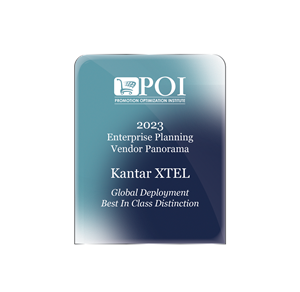
Pizza is a wonderful thing. When you make your own, everyone starts with the same foundation. But by adding their choice of toppings, they can create something truly unique that’s totally aligned with their preferences. Alternatively, you can buy one pre-made, which is more restrictive but can still be seasoned to everyone’s taste.
The same principle can be applied to deploying a Trade Promotion Management (TPM) solution across multiple markets. You can follow a ‘homemade’ approach, giving each business unit the freedom and flexibility to tailor their solution for their needs. You can also go with a pre-built solution that gives each market the same solution to work with. Or you can go somewhere in between.
For CPG companies looking to deploy a TPM solution regionally or globally, that decision comes down to how confident they are in driving and supporting change across markets. Less localisation means greater standardisation, making multi-market change easier to manage. However, tailored solutions are better equipped to solve local challenges, which naturally drives adoption.
It’s a tricky decision to navigate, but one that XTEL has become skilled at helping our clients make.
Which pizza is right for you?
When we help teams determine which multi-market TPM approach is right for them, we start by understanding their thinking and goals. Whether their ambition is to improve TPM efficiency, make better decisions, or make better use of data and insights across territories, we consider how much localisation may be required to achieve those goals in different regions.
We also need to consider the client’s structure and culture. Highly centralised organisations lend themselves well to top-down approaches, where every team is handed the same solutions with minimal localisation. But in organisations where markets operate more independently, there will likely be pushback at having a solution ‘imposed’ on them, and a strong desire for a higher degree of localisation.
Often, the best point to settle on is somewhere between the two. Most organisations need a TPM solution and deployment approach that can deliver all the benefits commonality brings – like standardised ways of working and simplified reporting – but that’s also feasible and pragmatic for their business.
When we start working with organisations, they typically have a reasonably clear idea of where they want to land on that spectrum. Usually, they’ll have a basic rollout plan in place, along with some sample markets chosen to lead and test adoption.
We confirm that thinking and ensure their plan is well-suited through a series of business-focused pre-design workshops. These workshops help quickly surface any major issues that are likely to block or negatively impact the project, and enable us to define which ‘pizza’ is right for the organisation, based on the balance of:
- How the organisation is structured
- Variance in local and regional requirements
- Organisational culture and attitudes towards change
- Immediate technology needs (such as legacy systems approaching retirement)
Just like pizzas, TPM solutions should be built in stages
Whichever approach you go with, TPM deployments are an iterative, step-by-step process. So our advice is always to start with what’s really necessary – either by individual market or clusters – and slowly add capabilities in subsequent phases. Just like building a pizza, you don’t want to add too many ‘toppings’ at once.
Throughout the process, it’s important to remember that you’re designing for commercial teams as daily core users. By giving those users the chance to get hands-on with an early Minimum Viable Product (MVP), you can empower them to choose which ‘topping’ should go on next. As a result, the TPM pizza they end up with will be distinctly theirs, and perfectly aligned to what they want and need.
While that’s happening, you’ll also need to be careful that other areas of the organisation don’t start throwing their choice of toppings on too. To begin with, keep things focused on the requirements of your core users. Other departments will have the chance to top their own slices as your deployment progresses.
When people smell pizza, they come running
Once people see TPM change happening, and understand that budget is available for TPM transformation, you’ll see a surge of interested parties coming to you with requests and ideas for how things should evolve. We call this the TPM ‘magnet effect’, and it can lead to significant scope creep – and if it goes unchecked, project failure.
To combat this magnet effect, leaders must get good at saying, “We’ll do this in a later phase,” and core teams must be empowered to push back on scope creep. They need the space to create a relevant and functional core MVP, so everyone can layer their desired ‘toppings’ onto the same foundation.
This MVP is the ‘TPM pizza’ that’s deployed first to your core markets, then configured to meet their specific needs. This solution configuration can then be copied and pasted into subsequent markets quickly and efficiently, or additional features can be added first, giving you a new core model for other markets.
Another approach is to create a ‘pizza’ for, most commonly, a group of modern trade markets. This core will have a wide range of functionality to meet the needs of mature markets with higher levels of resource and data availability. When you then roll out in traditional trade or distributor markets, you can remove functionality instead of adding it, because the solution is modular and configurable.
The same aligned business processes and core capabilities that were agreed at the start of the project in the pre-design workshops are deployed to all the markets in scope. But instead of scaling the solution up with new capabilities, features are removed for markets and teams that don’t need them – keeping solutions relevant and intuitive for everyone.
This approach has enabled us to quickly deliver regional and global TPM projects for many multinational CPGs. By starting with a ‘pizza base’ configuration for the initial deployment, and fitting this to meet the requirements of subsequent markets by adding or removing ‘toppings’, we ensure everyone gets, if not what they want, then what they need.
To learn more about our TPM transformation approach and discover how we can help you apply these principles to execute consistent TPM solution deployment in multiple markets, visit our solution page, or contact us.
Browse more TPM dedicated content, visit our Trade Promotion Management Knowledge Hub.

Ed Bishop
Presales Director, Europe
XTEL earns the Global Deployment Best in Class Distinction in the POI 2023 EPx Vendor Panorama


XTEL Earns 7 Best-In-Class Functionality Distinctions from POI
XTEL receives one of the highest number of Best-In-Class distinctions from POI in the 2023 Enterprise Planning Vendor Panorama Report
